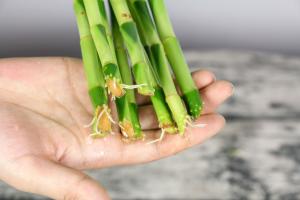Should I Stake My Newly Planted Tree?
Planting a tree is a great way to contribute to the environment, and it is important to make sure it has the best chance of survival. Staking a newly planted tree is often recommended by experts, but it is not always necessary. In this article, we will explore the pros and cons of staking a newly planted tree to help you make an informed decision.
Reasons to Stake a Newly Planted Tree
Staking a newly planted tree provides support and stability, which can be especially important for young trees with small root systems. If a tree is not staked, it may sway or lean in the wind, which can damage the roots and inhibit growth. Furthermore, staking can help prevent the tree from being uprooted by strong winds or heavy rain. Additionally, staking can help ensure that the tree grows straight and tall, which can have aesthetic benefits as well as prevent damage to nearby structures.
Reasons Not to Stake a Newly Planted Tree
While staking can provide many benefits for a newly planted tree, there are also reasons not to stake. One of the main drawbacks of staking is that it can actually inhibit the growth of the tree. When a tree is staked, it relies on the support provided by the stake and does not develop the same level of strength as a tree that is left to grow on its own. Furthermore, if the stake is not removed in a timely fashion, it can cause damage to the tree by constricting growth or rubbing against the trunk.
When to Stake a Newly Planted Tree
So, when should you stake a newly planted tree? The answer depends largely on the individual tree and its environment. If the tree is planted in an area with high wind or inclement weather, staking may be necessary. Additionally, if the tree is tall and top-heavy, it may require support until its root system has had time to grow stronger. However, if the tree is properly installed with a deep and wide planting hole, it may not require staking at all. It is important to consult with a professional arborist or horticulturist to determine the specific needs of your tree.
The Proper Way to Stake a Newly Planted Tree
If you decide to stake your newly planted tree, it is important to do so correctly. The stake should be positioned on the side of the tree where the prevailing winds are coming from, and should be no more than two-thirds the height of the tree. The stake should be driven into the ground at least two feet, and should be firmly attached to the trunk of the tree with flexible material such as rubber or cloth. Finally, it is important to regularly inspect the tree and the stake to make sure that it is not causing damage.
The Bottom Line
Overall, staking a newly planted tree can provide valuable support and stability, but it is not always necessary. The decision to stake your tree should be made on a case-by-case basis, taking into account the individual needs of the tree and its environment. If you do decide to stake your tree, be sure to do so correctly to avoid causing damage. Consult with a professional if you are unsure about whether or not to stake your tree or how to do so.

 how many times do yo...
how many times do yo... how many planted tre...
how many planted tre... how many pine trees ...
how many pine trees ... how many pecan trees...
how many pecan trees... how many plants comp...
how many plants comp... how many plants can ...
how many plants can ... how many plants and ...
how many plants and ... how many pepper plan...
how many pepper plan...































